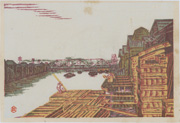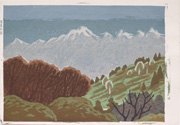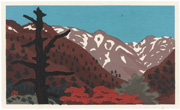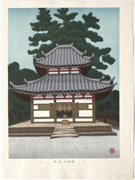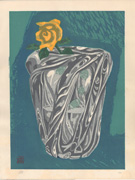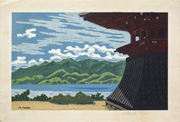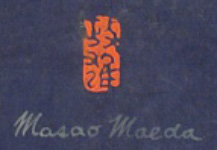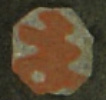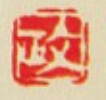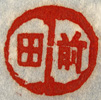Prints in Collection
Fukagawa Kiba (lumberyard), 1929 IHL Cat. #1724 | 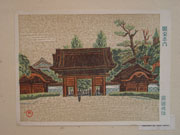 Red Gate at Imperial University Red Gate at Imperial Universityfrom the series Scenes of Last Tokyo, 1945 IHL Cat. #57 | Signs of Spring - Mt. Togakushi, c. 1955 IHL Cat. #686 |
Oku-nikko from the portfolio Hanga kanshōkai sakuhin-shū, Volume 1, 1980 (orig. 1959/1960) IHL Cat. ##2065 |  Cape Tachimachi, c. 1960 IHL Cat. #1828 | Nara Shigatsu-do, 1970 IHL Cat. #687 |
IHL Cat. #832
Biographical Data
Biography
Maeda Masao 前田政雄 or 前田正夫 (1904-1974)Source: Modern Japanese Prints 1912-1989, Lawrence Smith, British Museum Press, 1994, p. 29.
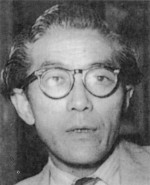
The Artist Words on Woodblock Prints
Source: Modern Japanese Prints: An Art Reborn, Oliver Statler, Charles E. Tuttle Company, 1956, p. 132"I think that woodprints suit the character of a Japanese. The materials are close to our life: wood, paper, even the baren with its bamboo cover. I think of trying etchings and lithographs but I never get around to them, and though I like Onchi's ideas of utilizing all sorts of odd materials, I just can't get away from wood."
1The Ichimokukai – The First Thursday Society, which was crucial to the postwar revival of Japanese prints, was formed in 1939 by the group of people who gathered in the house of Kōshirō Onchi in Tokyo. The group met once a month to discuss print related issues.
Signatures and Seals
Ma
Ma
Ma
Maeda
brushed
